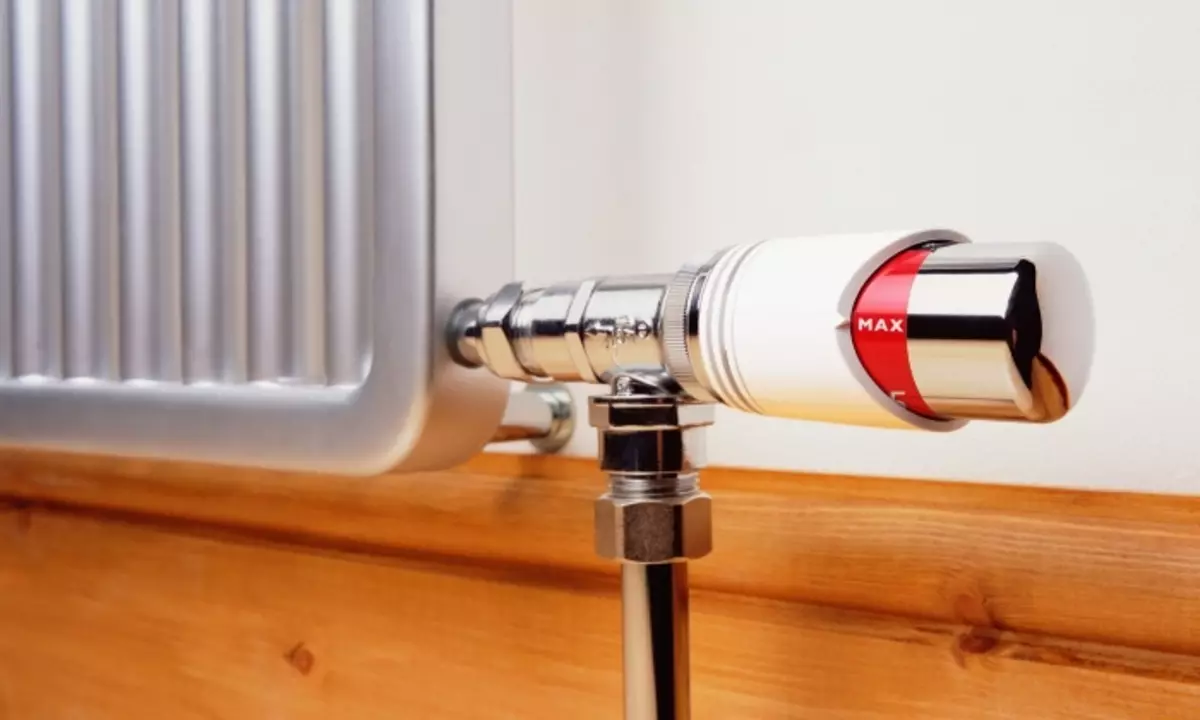
With the onset of frosts, there may be a problem with leakage of heating radiators. Very often, this problem occurs unexpectedly, and it is difficult to navigate than to take the radiator. There are many situations when the flow has fully showed itself among the night, at the most unexpected moment.
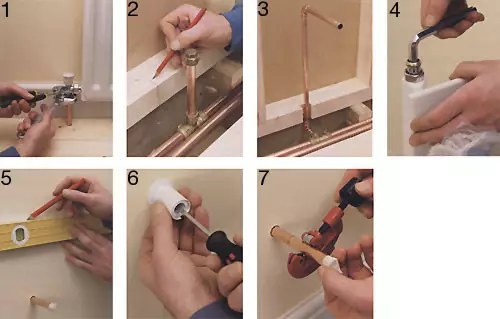
Phased tickling of leaks in the radiator.
Causes of the leakage of the radiator
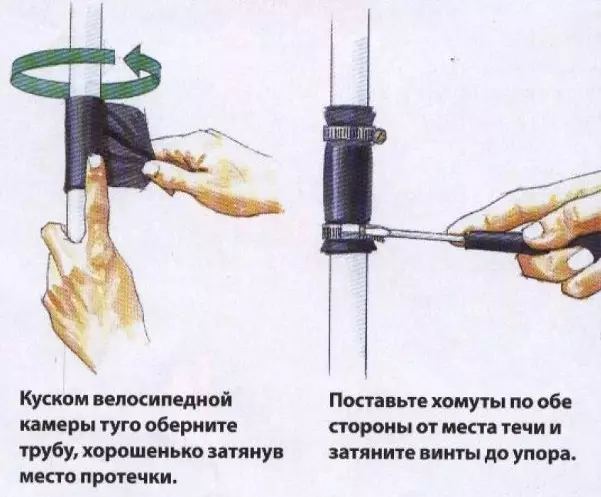
Radiator leakage pattern scheme.
Very often the cause of the formation of leaks in the heating system is corrosion processes affecting the metal (of course, if the radiator is not plastic). Thus, the metal pipes on the inside affect the liquid, which is constantly circulating in the system. It is difficult to call it with water, since it is very often for the improvement of the properties of the coolant to it add various chemical compounds of unknown origin. From the outside, the material is affected by moisture and temperature fluctuations. These factors are together and lead to corrosion and, as a result, leaks.
Corrosion processes are not subject to plastic pipes, but they have their drawbacks. Thus, polypropylene or polyethylene pipes can leak if the installation was incorrectly made or incorrectly chosen consumables. A common mistake is an acute desire for saving on materials. Pipes designed for cold water are much cheaper, and many mistakenly use them for heating systems. Hot water acts on them destructive: under its exposure they can burst, swell or deform.
Save on pipes for heating will not be possible: the need for frequent replacement will cost much more expensive than the one-time purchase of a high-quality radiator.
Metal-plastic radiators are susceptible to flow: this can be a consequence of non-compliance with bend radius or poor-quality installation work. By installing the heating system, you should navigate whether to make the radiator depending on the material from which it is made and from the place of flow.
The leakage may occur at the most unexpected moment anywhere - on the smooth section of the radiator, in the places of the threaded connection or fastening fittings, at the place of docking the radiator sections.
Repair of the radiator depending on the place of flow

Repair of the radiator from leakage with rubber.
If the gap appeared on a flat site, you can use rubber for insulation. The location of the flow should be wrapped with a soft rubber harness and tighten the clamps to be tightly or wire. The main thing is that the rubber harness is somewhat wider than the damaged area and closed it tightly. In order for the hole to be embedded as close as possible, you can use a special plumbing clip designed for pipes. Such measures will allow to exploit a damaged radiator until the end of the heating season. With the first opportunity, it is desirable to take a hole or replace the radiator to a new one.
If the water leakage rate allows you to go to the store for instruments, you can buy a factory bandage equipped with a layer of sealing rubber. You should get a clamp for clamping.
A little more difficult is the situation when the leakage arose in the place where the pipes are connected. If the pipe width is larger than the factory band parameters, you can replace the sealing layer on a piece of conventional gum. It wounds on a damaged place in such a way that the difference in parameters is compensated. In the future, rubber should be pressed using a special clamp. Despite the fact that the clamp can not be established quite exactly, it will not affect the force of the crimping of the problem area of the radiator.
Article on the topic: Bedroom design 2 on 2
Repair with cold welding
When there is a small damage, there is no better means than to take the radiator with the help of cold glue. Before use, it is necessary to check the expiration date: it is usually 2 years from the date of production.
Necessary materials:
- Cold welding glue;
- gloves;
- acetone or gasoline;
- sandpaper.
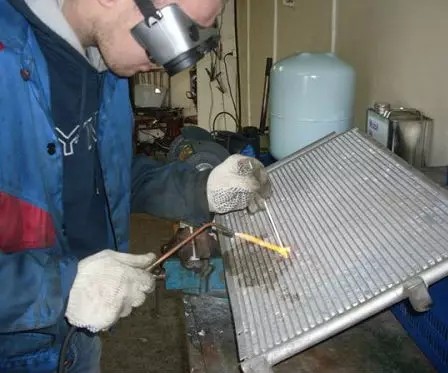
The adhesive mixture should be carefully applied to the place of the radiator leakage and wait for complete drying, about 60 minutes.
If it is possible, it is advisable to drain water from the system: this will allow you to degrease the surface degreasing at the place of leakage. It should be borne in mind that glue is a two-component means, and its ingredients in relation to each other before mixing are inert properties. Externally, it is a white shell and brown core.
The processed surface should be carefully degreased, clean from dirt. You should use sandpaper to stripping parts in the clutch places.
Next, it is necessary to take a small amount of adhesive mixture and gently mix its components using wet hands (necessarily they should be in gloves). The ready-to-eat is the mass of homogeneous color, sticky and plastic to the touch. Fast movements should be applied adhesive mixture to a tank or radiator (depending on where the leakage occurred). If necessary, you need to fix the surfaces that are subjected to gluing with a harness by 15-20 minutes.
Up to complete curing of the adhesive mixture, it is necessary to wait about 60 minutes. After this period, the composition can be painted, submitted by various types of processing. The maximum strength of the mixture will be achieved in twenty-four hours. It turns out, only after a day it will be possible to expose the radiator to substantial loads.
Before holding a clamp, it is necessary to carefully block the cranes and start work only when the water will stop in the place of leakage. If there is no possibility to drain completely from the heating system, water can be used by half-coordinate cranes from bronze. Such cranes are installed on heating radiators and are often supplied with American nuts. This design makes it possible to close the taps tightly and disassembling the radiator without draining the water from the system.
When weakening the nut, you can make a small drainage of water to check the functioning of the system. In this case, you can use the usual plumbing adjustable key. It is desirable that the surface on which glue will be applied is dry.
You can improve the quality of gluing and the speed of frozen, using hair dryer.
Elimination of a large gap
When leak is too strong and there are no options than to take a radiator, you should immediately cause emergency service. If, due to the large flow, boiling water is not available to get access to the battery, it can be covered using a dense blanket. This will not decrease the flow of water, but it will be possible to approach the radiator closer and inspect the details of the accident.
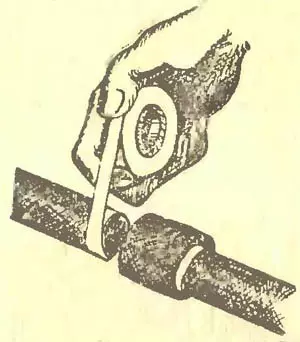
You can temporarily reduce the radiator with a rubber band, while you expect emergency service.
Article on the topic: Drainage of the cellar. How is the water in the cellar?
It is quite easy to cope with the situation when the flow occurred in the place where the battery is attached to the pipe. In this case, before the emergency service, you can use the wire and a piece of rubber, covering them the hole. In the presence of a metal clamp, you can completely eliminate the current.
When the leakage arose in the place of docking sections, you can use the unusual method. So, the hole can be tightly slaughtered with tissue strips, pre-tested in moisture-resistant thermal adhesive. When the glue mixture is completely dry, the leakage of the radiator will be tightly closed.
Another good tool than to make the radiator, are various polymer and powder sealing compositions. They are able to eliminate flow for a while before the arrival of emergency service workers. The principle of operation of these sealing agents is the instantaneous polymerization during contact with air. The sealant is able to withstand the effect of high temperature, not inclined to evaporation, can prevent leakage to the leakage for a long time.
If there is a welding machine, you can eliminate leak in steel pipes. Before repairing work, they need to be released from water. If the gap provoked the occurrence of a hole of a large size, you should use an additional steel overlay from the sheet material. Be sure to maintain the welding machine during repair work.
The ripping of the radiator with epoxy resin
Necessary materials:
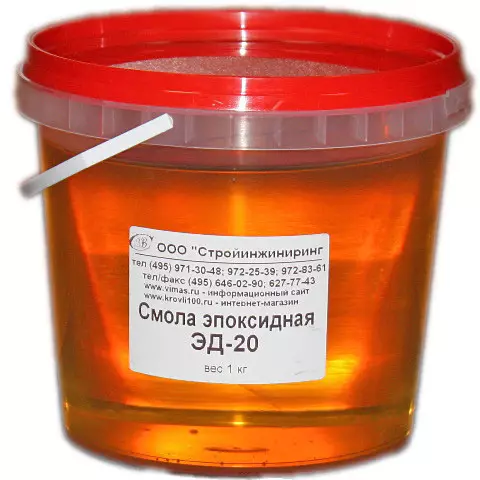
Epoxy resin is necessary when riding the radiator.
- rag harnesses or bandages;
- epoxy resin;
- steel rope;
- Zinc bleel;
- Metal clamp with bolts.
Often, rag ribbons moistened in various solutions are used to eliminate the radiator leaks. So, before closing a rag harness to the place, it is desirable to clean the damaged surface to the metal with the help of a noded steel cable. Wash cloth is necessary in several layers.
As a fixing solution, which can be sealing a radiator hole, it is recommended to apply a mixture consisting of bronze paint (bronze powder) and epoxy resin. Such properties have a combination of aluminum powder with epoxy glue. In the absence of the aforementioned components, you can take a hole with a tissue tapes moistened to zinc bleel. In this case, it is advisable to use at least 4-5 layers of fabric. After it is wound on the radiator tape with a fixing composition, you should apply a metal clamp on the tissue layer, which is tightly tightened by bolts.

A mask is applied to the metal clamp with bolts, which will hold the flow in the pipe.
When using iron smear, you can do without a tape. In this case, you should know exactly where the radiator flows. The putty is applied directly to the clamp. If the metal clamp is not possible, in this case, the layer of tissue moistened into the iron plug solution, on top of which a layer of insulating tape should be coated. The entire design should be fried around the edges using several wire twists. If you have to use such sealants for a long time, before the start of the heating season, you should replace the old layers of windings to new ones. Before connecting the heating, the fabric should dry well.
When the winding is used for a long time, the melting in it can be blurred under the influence of hot water. When replacing the old layer to a new preferably problem area, rinse with gasoline or acetone: so optimal conditions will be created for more reliable fixation.
Article on the topic: Where transparent curtains are used from PVC
The ripping of the radiator with cement
List of essential materials:
- bandages;
- cement;
- water;
- asbestos.
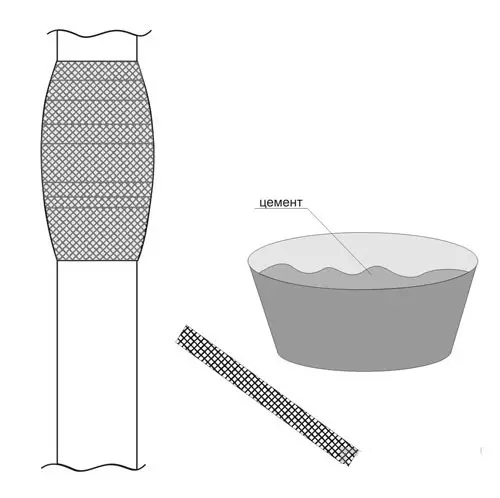
The radiator can be sealed with bandages and cement.
Before starting repair work, overlap water in the system. Next, it is necessary in a separate container to prepare aqueous cement solution (the mixture should be liquid consistency). The medical bandage needs to cut into strips of this size so that you can wrap the damaged pipe twice. The resulting tapes must be soaked in cement mortar so that they are well soaked. The problem space is wrapped by pieces of bandage before the formation of a thick layer. After that, the resulting cocoon is needed on top to deceive with cement mortar and leave until complete drying. If necessary, this sealing layer can be painted under the color of the radiator. If the work was performed correctly, there should not be more pipe. But this method cannot be performed if it is impossible to block the water: the liquid rapidly blurs the cement, and the mixture simply will not have time to harden. In this case, in front of the layer of bandages impregnated with cement, you should create alabaster layer: it will not give water to leak. Cement winding is not recommended to be used in such heating systems, where water is under constant strong pressure.
Elimination of the inner leakage
The owners of central heating systems may encounter a rather non-standard problem - the inner leakage of the radiator. A tank can occur, boiler or other component of the system. So, the leakage may occur if the pressure drops in the combined boiler either in any other closed system. How to make the radiator in this case? Taking advantage of special sealing compositions, you can take any inner leakage. Typically, one packing of an ordinary sealant is enough to flush about a dozen single radiators or a capacity of 100 liters.
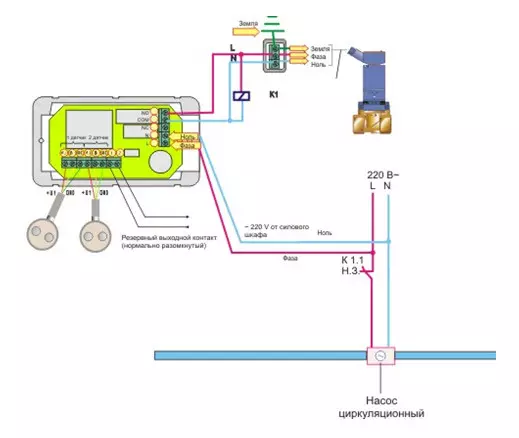
Scheme of installing a system of protection against water leaks.
When repairing an open type system, it is necessary to pre-drain 5-10 liters of water through a drain crane. You need to pour into the expansion tank into the expansion tank: it will be possible not to worry about the loss of purified water. It is necessary to repeat the procedure several times until the sealant is completely absorbed.
If the heating is a closed type system, it is possible to flick the leakage as follows: Pour a special sealing agent into the device for drying towels. After turning on the circulation pump, you should increase the temperature in the system and heat it slightly. This will ensure uniform absorption funds. You can make injection sealant directly to the affected radiator.
A similar tool can be used to eliminate external leakage. The special means is applied to the damaged place (the surface should be pre-dried), and the fixing tape is wound on top or any other type of fastening. The tape should be watched in such a way that its edges are further than the flow area. After that, an additional layer of sealing agent should be applied.
Using any of the above methods, you can temporarily take the radiator and secure your apartment and neighboring possible flooding and quietly wait for emergency services. Many methods can eliminate leakage only for a while, and at the first opportunity, the radiator should be overboard repairs or its replacement.
